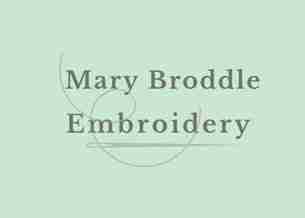The Wisdomof a T Shirt Quilt

How does train maintenance relate to a quilt made of of old t shirts? Read on to find out…
When learning engineering design we were asked “how do you eat an elephant?”. The answer being “in small pieces!” I’ve never forgotten that nugget of wisdom. Applying it to uni projects, to my work on rail depots and now as an entrepreneur. I don’t need to know how to do every step before I start. I need to work out where to start, do it and then the next step becomes clear.
I wanted to make a memory quilt out of my kids’ old t shirts. I wanted the quilt to serve a sofa throw (ie huge) and didn’t want to faff about with samplers. But I hadn’t made a quilt before. How hard could it be?
So I broke the elephant into pieces. I worked on the next step ahead without being sure how I would do the following ones.
First up was cutting out the t-shirt fronts. I quickly realised that the pictures on toddler t shirts aren’t nice and recantangular.
The fact that I wasn’t going to be machine sewing 60 rectangles neatly together was the first hurdle I came across. It made putting together the quilt top a jigsaw. A king sized quilt takes up a lot of space, so i decided not to worry about perfectly planned out positioning and just started pinning and sewing t shirt fronts together organically, placing small pieces in to fill the gaps where they didn’t tesselate. It took months of work on and off (I was still in my corporate role). And a huge number of Pins!
Next up was quilting it. On a domestic sewing machine. I wasn’t hand sewing this beamoth!
Many quilters sew together the patchwork pieces that make the top and then send if off to someone who has specialist machine called a long armed quilter. It looks nothing like a sewing machine. But to my mind using free machine embroidery to quilt the piece was the fun bit.
Some people have sewing machines with a longer throat (i think that is the right term), but mine is more run of the mill. So how was I going to quilt this beast of a sandwich (another quilting term for the top, wadding, and backing). I bought an extension table for my machine, which gave a little more stability and rolled the quilt up.
By sewing for an hour here picking out motifs and drawing shapes by free hand machining I quilted the sandwich. I used one type of thread, pre wound several bobbins, so I could replace them whilst everything else was in situ. And just started!
Next step was backing it, again a challenge. This quilt was gigantic, far bigger than the width of a bolt of fabric. So I went to my local fabric store and talked through how to do it with the owner. Another nugget of advise – it may be your vision, but ask for other’s insights to help realise it.
I then took over the dining table and pinned about 6 meters of fabric to the back of the quilt. (I still hadn’t worked out how I would do the edges.) I sewed the fabric to the sandwich by following the edges of the t shirts.
Finally I decided that I would eschew the traditional method of quilt binding. Partly for the fact that the edges weren’t entirely straight and level. I found my own way of doing it, and it suited the quilt better.
Lessons I remembered making this quilt:
- Not knowing how to do every step is not a reason not to start something
- Ask for help & advice, it doesn’t stop it being your ‘baby’
- You don’t have to do things in a traditional way for it to be a success
- You don’t always need fancy equipment
- Sometimes you need to start a big endeavour with a certain level of naivety
- And you can never have too many pins.
I love the quilt I made and so do many others, it also gets a lot of use in our hours. I learnt a lot from making it, just like those elephant pieces.
Don’t let not being an expert stop you from doing things. We learn as we go along.
The Blog from Mary Broddle Embroidery
News & Musings

Keep up do date with the latest goings at Mary Broddle Embroidery.
From news on upcoming workshops and new kits, to why embroidery is good for you.
As well as articles musing on the history of needlework and about my passion for stitching.

Recent Comments